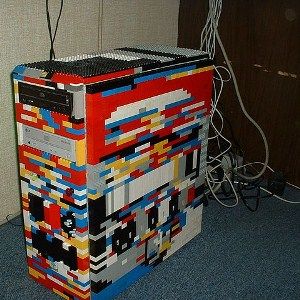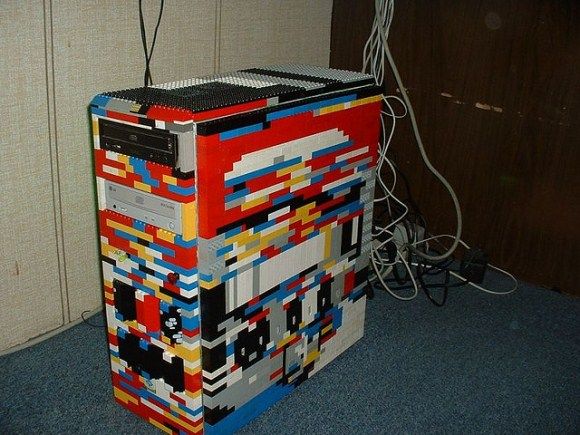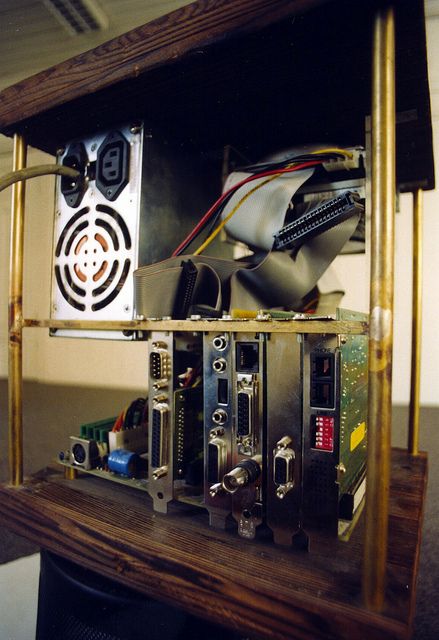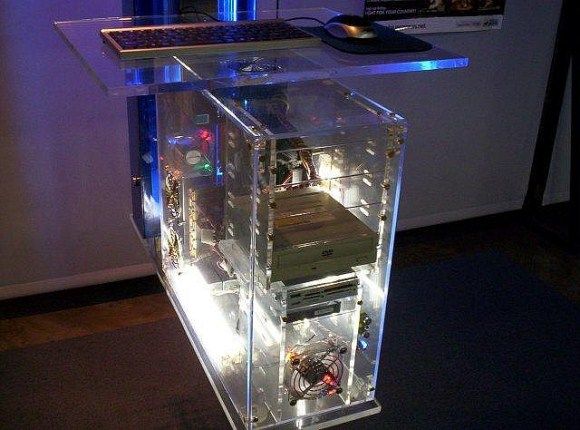In the early days of Google, the vast amount of storage that was required to analyse the structure of the World Wide Web was stored in a custom PC case made from Lego! It’s been 16 years since that device was in use, yet PC builders still throw money at new cases when it is pretty easy to build your own from scratch using various methods and materials.
No Lego in your home? No problem – you probably have a trashcan lying around, or perhaps an old stereo system that can be cannibalized. If you’re looking for a good long-term project, however, why not try building your PC case from wood? The end result can be extremely impressive, although you might find a few challenges in the shape of a noisier-than-usual computer.
The following projects are an ideal starting point for any experienced PC builder.
Build a PC Case From Lego
Lego is a somewhat obvious choice for building a custom PC, but let’s face it, if it works, why not use it?
There is something satisfying about successfully completing a Lego project, after all, and using the popular plastic bricks as the support structure and case for your PC has proved to be a popular choice. You’ll find many examples of Lego cases on the web, utilizing either every different colour of brick that is available or designed with an impressive, blocky, almost 8-bit styled mosaic finish.
If you plan on using Lego to build your own PC case, you’ll find that there are many useful brick types that you can take advantage of, from the window frames and “fences” for air vents to the various clear bricks that are used in Lego as “glass”.
Structure-wise, don’t rely on the narrow bricks; instead, design your case to use the wider type of bricks, those with 2 x 3 or 2 x 4 pegs. Offering more support, these pieces are also more similar to real-life bricks. Flat, “plate”-style pieces should also be used in areas of the case where additional structural support is required.
Whether you’re looking at building a standard tower for media or gaming or an impressive server farm, Lego is a great choice of material! (note that for successful long-term use you will probably need to glue your bricks.)
Cannibalising Household Objects
There are various items that you might find around your home that can be used for PC building projects, even if on first glance they appear to be unsuitable.
Given that an old software box can house a small ITX motherboard, you should find that discarded stereos, DVD players, games consoles and even waste paper bins can all be used to house your motherboard, hard disk drive and PSU, along with any additional storage items you deem useful.
The same practicalities exist in using your own materials for building a PC case as for using household items and standard cases. Airflow must be kept at an optimum for cooling purposes, which means being able to open the case is vital. Just as importantly, the interior components must be kept isolated from any metal in the case; the case should also be grounded if there is any conductive material.
A Cybernetic Computer
Cybernetics – the embedding of digital and mechanical components into naturally-growing objects – has been a sci-fi dream (or nightmare to some) for many years. While you can’t yet install a Blu-ray drive in your lower torso, however, you can use nature’s own construction material, wood.
Combining a classical, old-world look with the modern sleek lines of DVD drives and digital readouts, PC cases constructed from wood require considerable planning but when finished look stunning and strangely unobtrusive.
Temperature within wooden cases tends to remain well within the boundaries, encouraged by airflow and the natural ability of wood to disperse heat.
One problem that you may face with a wooden case is noise; the resonance of wood (a key aspect of its use in the construction of musical instruments) can result in fans, disk drives and the PSU being louder than they might be in a standard case. Use of foam padding, strips of felt and other absorbing materials can counter this, however.
The Power of Good Planning
As with any home build project, planning is vital to a successful project.
Whatever materials you plan to use, weigh up what is necessary from your build by using spare components to plan the amount of bricks or size of case necessary. If components aren’t available, substitute cardboard boxes or foam blocks, although note that these won’t reliably reflect the finished project’s weight and structure requirements. All reasonable safety precautions should also be taken appropriate to the materials you’re using.
Ultimately, have fun – whether you use Lego, an old wastepaper bin, build your case from wood or find some other material with which to house your computer safely, enjoy it!
Lego PC Image Credit: Jordon Cooper, Wood PC Image Credit: Eklem, Clear PC Image Credit: CED




